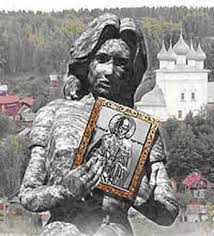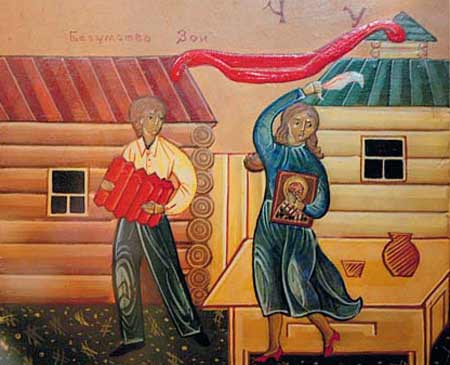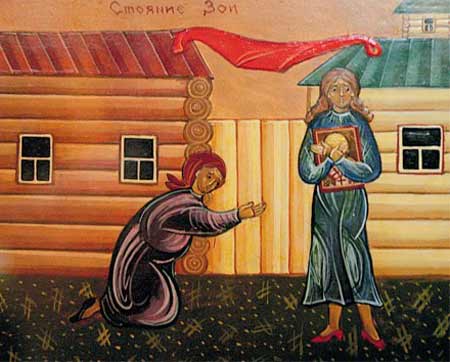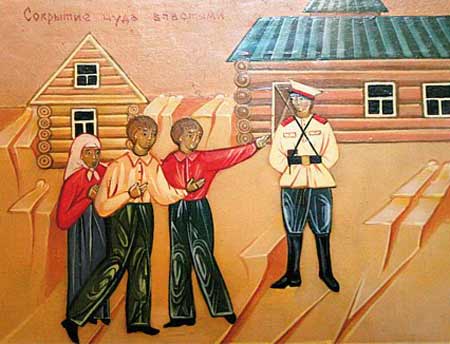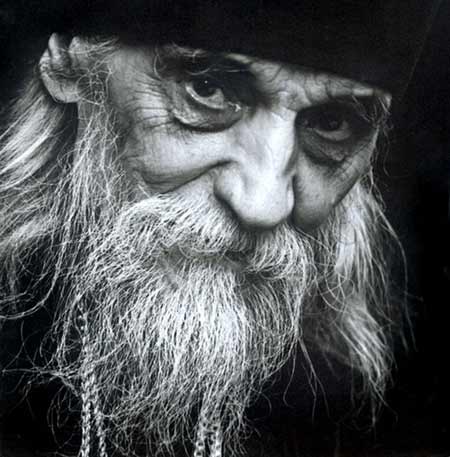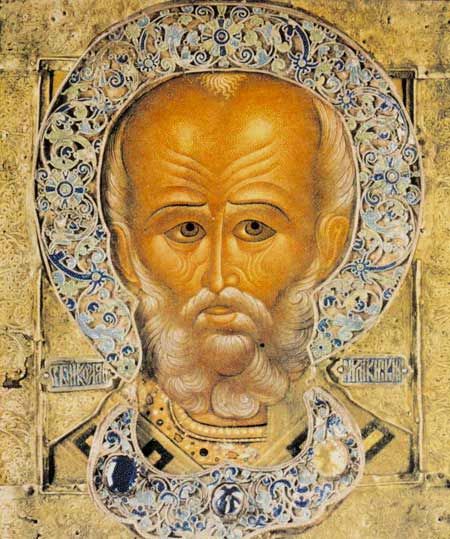It was in 1986 in Paris that I first read a samizdat life of Elder Sebastian of Karaganda (1884-1966) and came across the case of Zoya. Since that time Elder Sebastian has been canonized and his life published in English in the Optina Elders series of Platina. However, Zoya is mentioned there only briefly. On this, the fiftieth anniversary of the event, it seems fitting to speak more of this extraordinary occurrence.
The mysterious event took place on 31 December 1956 at 84 Chkalov Street in the town of Samara, far to the east of Moscow. The house was occupied by a very ordinary woman, Klavdia Bolonkina, whose son, Nicholas, had invited some friends round for a New Year’s party. Among them was an eighteen-year old girl called Zoya, with whom Nicholas had recently started going out.
At the party all the girls had companions, except for Zoya who was sitting alone. Nicholas was busy. When the dancing started, Zoya declared: ‘If I can’t dance with my Nicholas, then I shall dance with St Nicholas!’ At this she went off to the icon-corner to pick up the icon of the saint. Her friends were horrified. ‘Zoya, that’s a sin’, they said. ‘If God exists, then let Him punish me!’ she answered.
She picked up the icon of St Nicholas, pressed it to her breast and went off to dance with the others.
Suddenly she froze, as if rooted to the spot. It was impossible to move her and take the icon out of her hands. It was as if it were stuck fast to her. Zoya gave no outward sign of life, but a very slight pulse could be felt around her heart. An emergency doctor, Anna Pavlovna Kalashnikova, was called out and tried to revive Zoya. The doctor’s sister, Nina, who is still alive, was interviewed recently and related the following:
Anna ran home in a very agitated state. Although the militia had taken a statement from her promising her silence, she could not contain herself. She told how she had tried to give Zoya injections, but that turned out to be impossible. It was as if Zoya’s body had gone hard, the needles of the syringe would not penetrate the skin, they broke off. The whole town was talking about it. ‘You sit there and in front of you stands a girl who is frozen, holding an icon in her hands, as if rooted to the spot. They say that God has punished her’.
The event soon became known to the authorities in Samara. Since the affair was linked to religion, it received priority. A squad of militiamen was sent off to the house to stop sightseers. The authorities were right to be worried. By 2 January all the nearby streets were thronged with thousands of people, who had nicknamed the girl ‘the stone Zoya’. Various priests were invited to the house and ‘the stone Zoya’, since the militiamen were too frightened to go up to Zoya and the icon.
None of the priests was able to do anything until Hieromonk Seraphim (Poloz) arrived. He was said to be such a radiant soul and such a good man that he even possessed the gift of prophecy. He managed to take the icon from Zoya’s hands. Then he foretold that Zoya’s ‘stand’ would end only at Easter, which is exactly what happened. It is said that the authorities then tried to force Fr Seraphim to state that he knew nothing about Zoya. This he refused to do, whereon the authorities brought a trumped up charges against him and sentenced him to prison camp. On his release, Fr Seraphim never returned to Samara.
So it was that on Easter Day, 21 April 1957, after nearly four months without food or drink, Zoya’s body came back to life. For the first few days she just cried out the whole time: ‘The world is dying of its sins! Pray, have faith!’ Her mind, however, was never the same again. Scientifically and medically, there is no explanation for how the young girl survived for over 100 days without food and drink. At the time professors from Moscow had gone to Samara to investigate the supernatural event, but they could give no explanation, which they had at first assumed to be a form of ‘tetanus’.
After what had happened to Zoya, people flocked to the churches. They bought up crosses, candles and icons. Those who were not baptized got baptized. There is no doubting that all this really did take place. A girl really did ‘turn to stone’. There are the testimonies of eyewitnesses, some still alive today, and documents from Communist Party meetings of the time. ‘This isn’t some fairy tale or never-ending fable’, said Anton Zhogolev, editor of the Samara Orthodox newspaper ‘Good Tidings’ (Blagovest) and co-author of a book about Zoya, who has done years of research into the case. From the research, it is clear that this was not the only case of ‘petrification’ in Soviet times. For example there was also the nearby case of Marina Ilinichna Kurbatova in the village of Zuyevka near Togliatti in 1932. At the age of fifteen, she ‘froze’ for nearly six months, dying only recently, again her mind slightly deranged after the event.
Today, the house at No 84 Chkalov Street, where all this took place fifty years ago is still there and has become a place of pilgrimage from all parts of Russia. Klavdia Bolonkina long ago sold up. Coincidence or not, it is now occupied by a man called Nicholas, who has also called his own son Nicholas, in honour of the great saint. However, the house is now due for demolition and the Diocese of Samara wishes to build a small chapel on the site.
(Translated and edited by Fr Andrew from an article by Olga Riabinina in the Russian newspaper ‘Argumenty i Fakty’ (International), No. 32, August 2006

